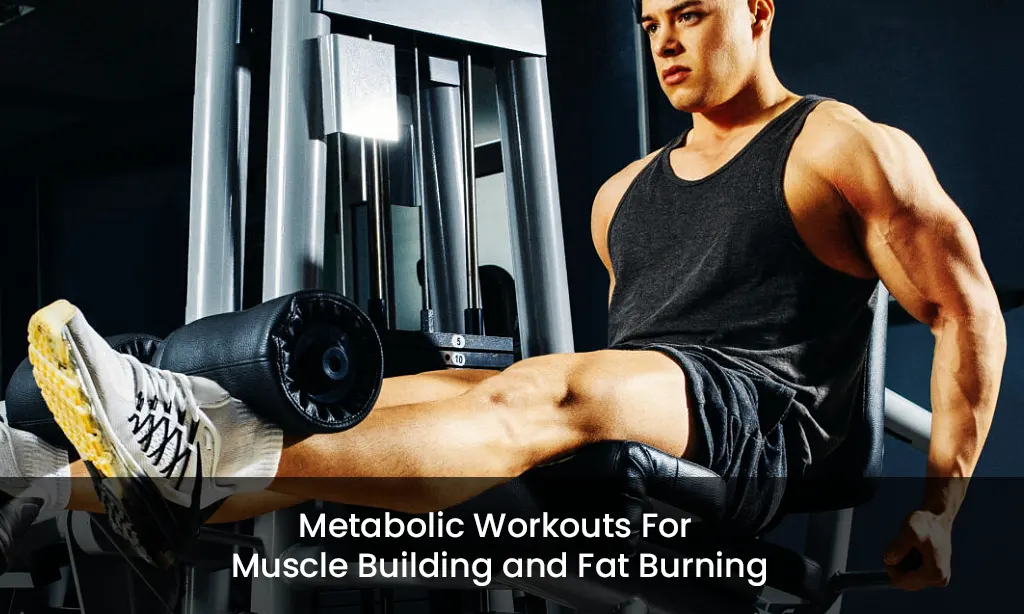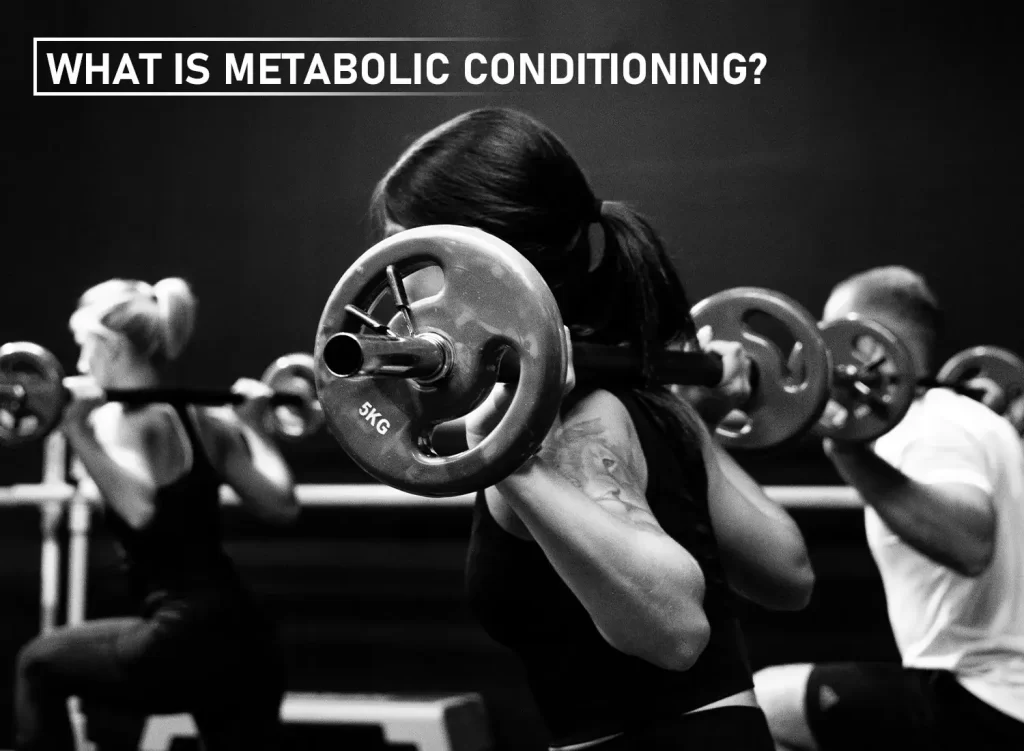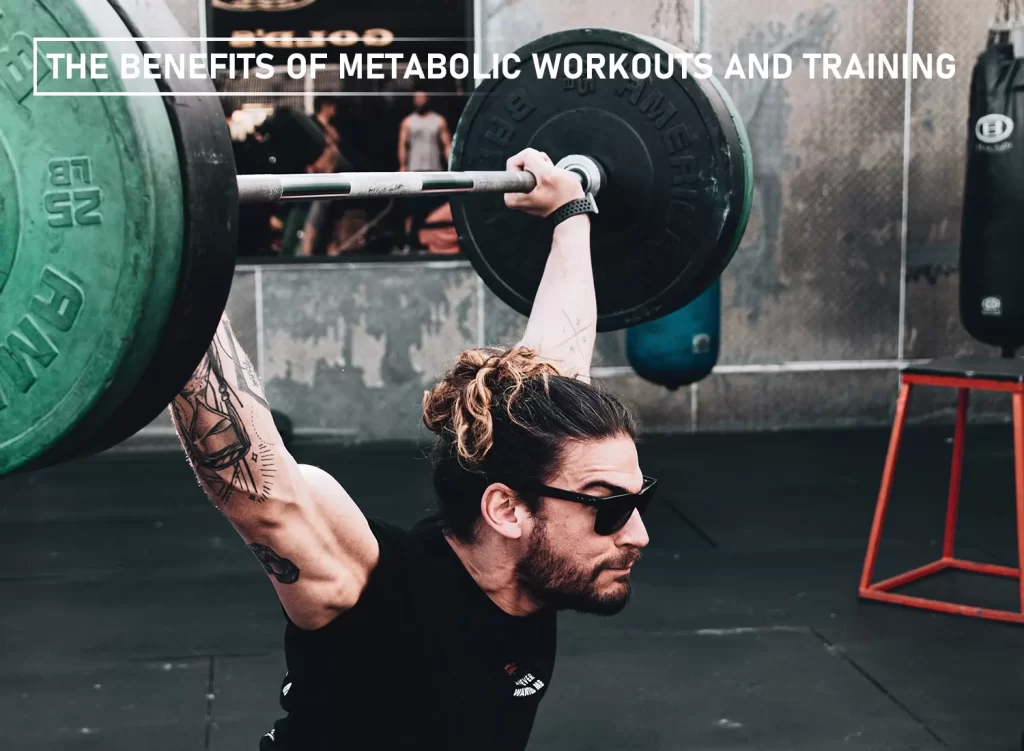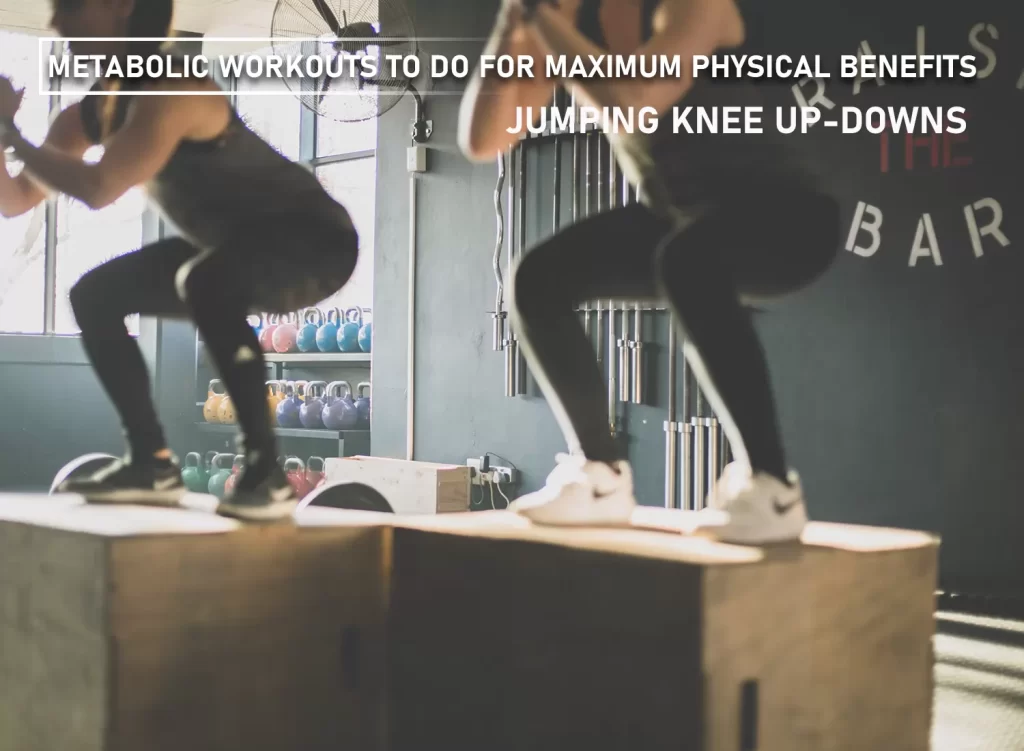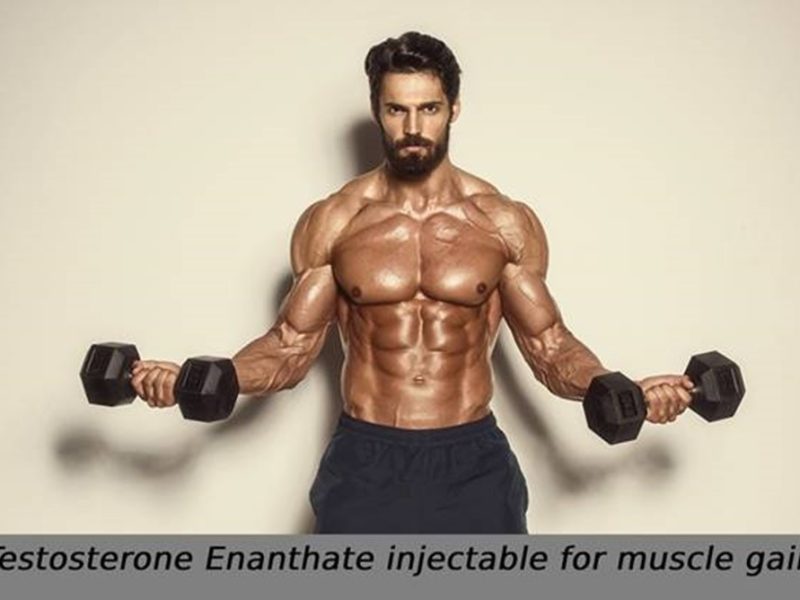Table of Contents
What is a metabolic workout, anyway? Metabolic exercises are a group of exercises performed in succession with little rest in between, with the goal of increasing caloric burn and metabolic rate during and after the workout.
Metabolic training is one of the most effective ways to combine cardio, strength, and endurance training with fat burning in a single workout session.
Metabolic workouts are compound exercises that target multiple joints and muscles at the same time and they are different from traditional weight training that exercise isolated muscle groups one at a time.
What Is Metabolic Conditioning?
Metabolic conditioning is any exercise that burns calories, which can lead to weight loss. This includes cardio training, which uses intense, steady movements and strength training, which focuses on using muscles. Metabolic conditioning is also often combined with dieting, meaning you can burn calories by doing both strength training and aerobic activity.
It is a combination of low intensity exercises that raise heart rate for approximately 30 minutes and high intensity exercise. Metabolic conditioning can be performed with or without weights. The weight is a tool to help increase intensity. The movements may be done on an elliptical machine, treadmill, stationary bike, or free weights. This type of training has been used by top athletes for decades. Metabolic conditioning is a great way to burn fat, build lean muscle, and improve the quality of life.
What Are Different Kinds of Metabolic Workouts?
It’s basically high-intensity interval training (HIIT) combined with very brief bouts of rest periods. An example might be sprinting for 30 seconds followed by walking for 60 seconds. HIIT works the muscles differently from low-intensity exercise and can build muscle quickly. High-intensity interval training is typically done at a faster pace and requires a higher level of exertion than other types of workouts.
A typical HIIT session lasts between 10 and 30 minutes. The goal is to increase your heart rate to a level where you can’t go any further, but you don’t want to be completely exhausted at the end of the session.
The Benefits of Metabolic Workouts and Training
- Burn Calories: It is the workouts themselves that are extremely effective. The number of calories burned in a single session can range from 300 to 600 depending on the exercises you perform and how hard you work. In general, this is a very efficient way to work out.
- Speed Up Metabolism: When you do metabolic training, you push yourself harder than usual, which allows your metabolism (your body’s process for burning calories) to continue working harder and longer after you’ve finished.
- Faster Muscle Building: Metabolic training is characterized by the use of compound exercises with resistance performed at a high intensity. This increases muscle recruitment and exhaustion while also naturally triggering the release of growth hormone, which is essential for increasing muscle mass. Almost every metabolic training session will leave you with the sensation of your muscles burning. That is an indication of an internal process in which a cocktail of hormones is being released to build up those muscles so that they are stronger the next time around. This, combined with the highly effective fat burning, can help you achieve a more lean and defined physique much more quickly than you would with most other forms of training or exercise alone.
- Cardiovascular Benefits: The majority of traditional weight training consists of performing a set, resting, and repeating the process. While you are actively lifting, your heart will be working, but it will not be doing much. Despite the fact that metabolic training is centered on strength moves, you do not get the same amount of rest. As your body works to keep up with the pace, your heart rate will be elevated significantly. This benefit is critical for the health of your cardiovascular system. In addition, it eliminates the need for “cardio days,” which would be necessary with a traditional split day weight lifting schedule. Your cardio is already built in, which saves you time and effort.
Metabolic Workouts To Do For Maximum Physical Benefits
Below are some of the best 15 minute metabolic workouts to do if you want to maximize all the benefits we’ve gone through above in the least amount of time.
Dumbbell Crushers
To begin, gather a pair of dumbbells. Start with your feet about hip-width apart or slightly wider than shoulder-width apart. Next, with both dumbbells at your sides, perform a dumbbell squat to begin the exercise. Perform one biceps curl once you have reached the bottom of your active squat. Lift the dumbbell overhead as you stand up to perform a shoulder press with your hips thrust forward. Once your arms are extended above your head, bring your dumbbells together and perform one triceps extension with each of your dumbbells. Ensure that your elbows are tucked in. Always keep your focus on engaging your core and maintaining control of the movement. That counts as one rep. Reduce the weight of your dumbbells and begin again.
Running Lunges
Begin at the bottom of your lunge with your right foot in front of you and your left knee on the floor behind you. The angle between the back of your knee and the front of your hip should be exactly 90 degrees. Front knee should rest directly on top of the ankle, while the back knee should rest directly beneath the hip in both directions. Effortlessly drive your back knee up into a high-knee position while simultaneously hopping your right foot off the floor. Return to your starting position and proceed as before. If the jump is too much for you, you can eliminate it and simply step up instead.
Jumping Knee Up-Downs
These are performed by starting at the bottom of your squat and stepping back into them while lowering your knee to the floor. Then bring your other knee down to the floor as well. Step your feet back up one at a time, starting at the bottom. Then, add an explosive jump to the end of your squat and return to the beginning of the exercise.
Mountain Climbers
Mountain climbers, when performed correctly, are a fantastic full-body, high-intensity exercise that works the entire body. “The more muscles you use in your workouts, the quicker your metabolism will increase,” Eden explains.
To begin, assume the push up-plank position. Hands on the floor, stacked directly under your shoulders, are the best position. Maintain a parallel line between your hips and the ground, and your feet back and together. Run your knees to your chest as quickly as you can, alternating legs with each rep. Make certain that your shoulders remain over your wrists and that your hips do not rise during the exercise.
Bear-Crawl Shoulder Taps
Set your body up in a table top position by stacking your wrists, elbows, and shoulders on top of each other with your knees on the ground. Lifting your knees off the ground while keeping your knees directly under your hips is accomplished by leaning on the balls of your feet. When you stand up, your shins should be parallel to the ground and no more than two inches above the ground. Once you’ve established a firm foundation, move one hand to the opposite shoulder. Make every effort to tighten your abdominal muscles so that your hips do not swing from side to side. Make use of your muscles and maintain control over the movement.
Final Thoughts
Any workout with a focus on your metabolism can be highly effective and can help you reach your fitness goals faster. Metabolic workouts provide incredible cardiovascular benefits, as well as long-lasting calorie burn, muscle strengthening, and muscle building. However, because it is such a demanding workout, it is critical to remember that it may take some time for you to become acclimated to it, even if you are a regular at the gym.
Before embarking on a new fitness journey, it’s always a good idea to consult with your doctor or a fitness professional first. You may want to add or subtract a certain exercise. You may need to modify the speed at which you perform the exercise. Or you may even need to add more than one type of exercise to your routine. Your goals, your fitness level, and your doctor’s recommendation will all factor into your workout plan.
